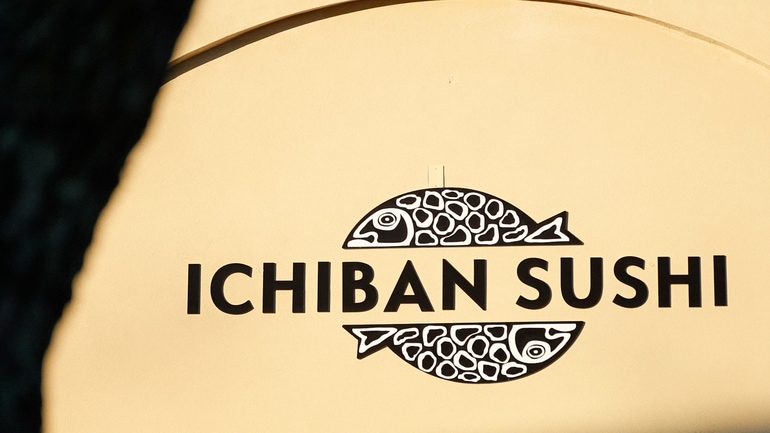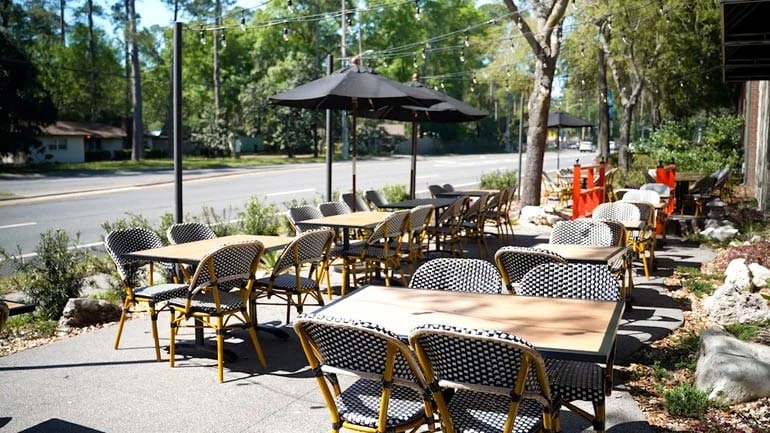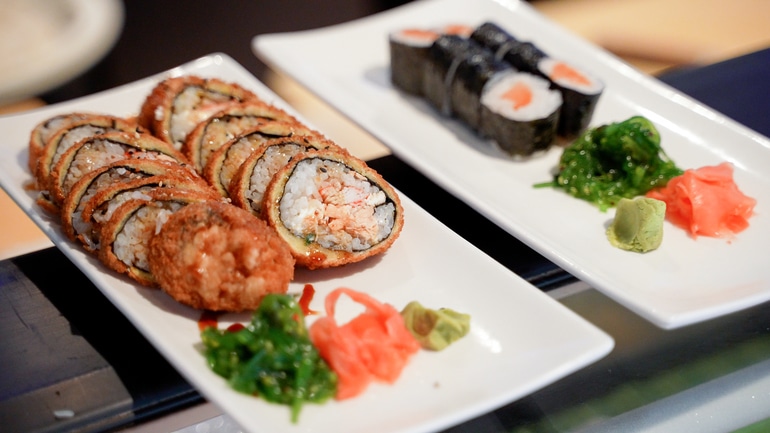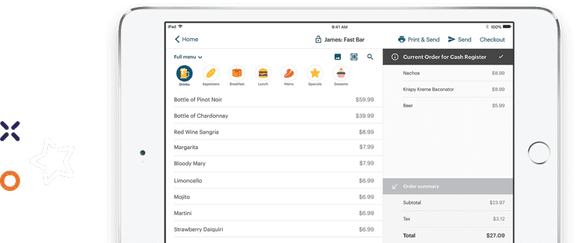Ichiban Sushi has been serving delicious pan-Asian dishes in Gainesville, Florida for 24 years and counting. When current owner Tod Whipple took over the restaurant a decade ago, he wanted to keep many aspects of the business the same.
“I think people like that it’s not stuffy. It’s very relaxed and open, and we allow customers to customize things well outside the menu that probably most restaurants wouldn’t let you do,” he says.
Tod says that Ichiban Sushi had a great menu, incredible staff, and a loyal customer base when he bought the business. However, there were some things he wanted to upgrade to ensure the restaurant could keep up with changing times.
The Challenge: Never Let the Guests See You Sweat
Unfortunately, keeping up with the changing times meant navigating the COVID-19 pandemic, which forced Ichiban Sushi to contend with major obstacles, like restrictions on indoor dining. A labor shortage, rising wages, and supply chain interruptions also affected operations and the customer experience.
Tod wanted to continue to serve customers without exposing them to the challenges the restaurant was facing.
“It’s all about showing them the baby and not the delivery, so to speak. Customers just care about the quality of their food, the service level, and the experience,” he says. “It’s important to have a strong technology partner in the restaurant business because there are so many pain points that come up that you try to hide from your customers.”

The Solution: TouchBistro’s All-in-One Restaurant Management System
Tod found the solution to his problems in TouchBistro: an all-in-one restaurant management system that could keep up with the restaurant’s challenges, while helping his team provide a smooth customer experience.
“TouchBistro has been a great partner because it allows us to seamlessly run our restaurant,” Tod says. “A POS system shouldn’t get in the way when you’re doing restaurant operations; it should just work and run effectively as a tool in the background. That’s exactly what TouchBistro does.”
In addition to TouchBistro POS, Ichiban Sushi uses TouchBistro Online Ordering, TouchBistro Reservations, TouchBistro Gift Cards, TouchBistro Payments, and TouchBistro’s staff management integration with 7shifts. The seamless integration of all these different solutions has done wonders for the business.
“Having a strong technology partner gives customers that omni-channel approach to reservations and to online ordering. When [customers are] here, they have a very integrated experience because of how quickly we can fire tickets to the kitchen. There aren’t many mistakes that are made, so our staff can focus on giving great service. You wouldn’t think that a technology partner could offer all of that but it actually does come down to that because it frees us up to do what we’re good at,” Tod says.
Results: A Better Experience for Guests…
With TouchBistro’s all-in-one restaurant management system, Tod and his team can focus on creating a memorable experience for guests.
Guests dining on Ichiban Sushi’s patio can get their orders in record time thanks to TouchBistro POS’s tableside ordering feature.
“Our servers use [tableside ordering] to go access our patio because that tends to be a little bit further away from the other server stations or the kitchen itself,” he says. Servers can bring an iPad out to customers, take their orders, and instantly send orders to the right station.
“We have a bifurcated kitchen here, so 50 percent of the orders go to sushi, and 50 percent go to the hot kitchen. All those menu items fire at the times when they’re supposed, which has been fantastic,” Tod says.
And when guests opt to enjoy sushi at home instead of at the restaurant, TouchBistro Online Ordering allows guests to place an order instantly online, without dealing with busy phone lines or waiting on hold for ages.
“We relied on in-venue dining so much and when that changed [because of the pandemic], having an online ordering component was critical, besides just calling our phone number,” Tod says. “We tend to get busy on Friday and Saturdays, like most restaurants, so if people can’t get through to us on the phone, then they just do online ordering, and their orders end up in a queue in our TouchBistro system, like everything else.”
Not to mention, TouchBistro Online Ordering has also given customers a whole new way to access their favorite foods.“Online ordering has been well-received by our customers,” Tod says. “We’ve integrated it pretty effectively into our website, and you can also access it through Google.”
And by also having their payment processing needs taken care of by TouchBistro, Ichiban Sushi has been able to avoid frustrating gaps in service when the internet goes down.
“My favorite thing about TouchBistro Payments is the offline aspect,” Tod says. “If we lose internet connection, we’re still able to process all of our payments, still function as a restaurant, and then when it comes back up, we’re able to batch out.”
That means guests can pay however they’d like, no matter what’s going on with the restaurant’s internet.

… and Improved Efficiency for Staff
And it’s not just the guests who have benefited from this technology. The all-in-one nature of TouchBistro’s products has also helped to streamline day-to-day operations and create greater efficiencies for staff.
Tod explains that “TouchBistro is super user-friendly for our staff,” allowing him to quickly train new hires to use the system so they can use it without skipping a beat.
Staff can also manage their schedules independently thanks to TouchBistro’s integration with employee scheduling solution 7shifts. Tod says that it has “been a pretty big asset in controlling labor costs, scheduling, and things clocking in and clocking out. It allows our staff to use 7shifts to do all their scheduling on their end. From a business perspective, we love how it’s tied in with the sales data from the POS so we can combine our labor costs and make sure that that’s staying in line with what our revenue is doing.”
Tod has also noticed that many of the customer-focused TouchBistro solutions Ichiban Sushi is using, like Reservations, Online Ordering, and Gift Cards, have made work easier for his team.
For instance, Ichiban Sushi used to rely on a reservations logbook. Unfortunately, this manual system made it difficult to keep track of bookings, so the team would sometimes forget to record them. Now that the restaurant uses TouchBistro Reservations, things have improved for both customers and staff.
“My favorite thing about TouchBistro Reservations is the easy integration into my Google My Business page and how quickly someone can just make [a reservation] online,” Tod says. “Once those reservations come in, we’re able to utilize the reservations tablet to seat those people and find out what stage of the meal they’re in. It really is like a whole soup-to-nuts process for the customer journey while they’re here, and it’s all run through that reservations iPad. [TouchBistro Reservations] has actually been more effective than I had originally even hoped for, [beyond] just taking reservations.”
But perhaps the biggest impact on efficiency has been the ability to manage all this data in one centralized location thanks to TouchBistro’s comprehensive reporting features.
“In 2017 we switched from our legacy POS system to a TouchBistro cloud-based system. The main reason for that is the legacy system wasn’t granular enough in terms of how it would break out aggregate revenue in terms of sales tax, voids, comps, and discounts. We needed things like that to be tracked more effectively to find out where all the revenue was going,” Tod says. “With TouchBistro, I have all the reports I could possibly need to effectively run the restaurant and find out what changes we need to make.”

Happy Customers and a Happy Team
Thanks to TouchBistro’s all-in-one restaurant management system, Ichiban Sushi has been able to expertly tackle pandemic-related challenges and conceal these struggles from customers – all without skipping a beat. With tools that streamline operations independently and add value when used together, Tod’s team can work smarter and delight guests along the way.






